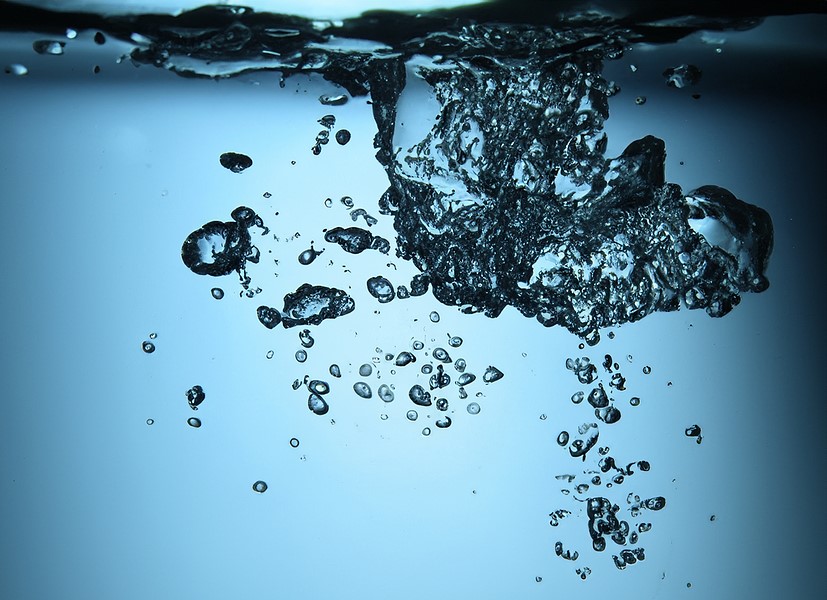News
Top Tech To Tackle The Water Crisis Head On
There are serious pros and cons to living in the 21st century. One of the biggest cons, of course, is the cataclysmic cloud of climate change that hangs over our heads like the sword of Damocles, a very real existential threat that will only become more and more urgent as time goes on.
But, equally, one of the biggest pros is that we’re living in the technological age, which means there are all sorts of innovative solutions that could potentially be employed to help us mitigate and adapt to the changing climate and the realities we are now faced with.
And the water crisis is certainly no exception to this, with countless different startups and organisations now seeing how technology could be harnessed to help address the global issues of water stress and scarcity.
Here are just a couple of interesting projects that are now underway and which could help relieve pressure on dwindling freshwater supplies around the world.
Startup NovNat Tech has just secured funding from Innovate UK to develop an atmospheric water harvester that can generate water out of air.
Working out of the Birmingham Research Park, the harvester uses a material that has already undergone rigorous testing to determine its water sorption capacity, displaying breakthrough performance and capturing and releasing water from the air faster and with less energy consumption than any other material out there right now.
This new wave of funding will help support the development of an on-board vehicle atmospheric water harvester that is able to produce clean water on the go.
Researchers from UC Berkeley over in the US have also been looking into the development of an atmospheric water harvester, except theirs is a handheld device that uses ambient sunlight as its only energy source, able to extract and convert water molecules from the air into drinkable water.
The device uses an ultra-porous material known as a metal organic framework (MOF) that extracts water continuously in the Death Valley National Park, which is the hottest and driest place in the whole of North America.
Its proven success in this part of the world suggests that the device would be able to produce clean water anywhere, which will become increasingly important as drought conditions continue to be exacerbated by climate change.
Unlike MOF-powered harvesters, materials like salts, zeolites and hydrogels are incapable of operating in low-humidity conditions in an energy-efficient way. But this new device could address water scarcity concerns and provide everything from drinking water to supporting agricultural work.
Lead author of the project Omar Yaghi said: “Almost one-third of the world’s population lives in water-stressed regions. The UN projects in the year 2050 that almost 5 billion people on our planet will experience some kind of water stress for a significant part of the year. This is quite relevant to harnessing a new source for water.”
As global population numbers increase, so too will demand for water supplies, which means that encouraging more sustainable use of domestic water resources will become increasingly important as time goes on.
Advanced technology can help people be more water efficient without really having to think about it or even try hard to save water. The Orbital Shower, for example, is a circular shower system that can help reduce water waste while being stylish and attractive, convenient to use and cost-effective, thus reducing some of the barriers getting in the way of being more eco-friendly at home.
The system works by analysing, purifying, heating and recirculating the water as the shower is in use, with everything happening in real time so users won’t notice anything different in comparison to their traditional shower system.
There are sensors in the shower drain that analyse the quality of the water 20 times per second to determine whether or not it needs to be recirculated. The water is then purified by a filter capsule and a UV light, while the internal heater corrects it to the set temperature before recirculating it back through the system.
The Warka Water tower was first piloted in Ethiopia back in 2015, a vertical structure that is able to capture clean drinking water from the air. The tower itself is covered in nylon netting that collects the dew that forms each day, with sufficient drinking water captured to provide a small village with the resources that it needs.
The frame is made from bamboo and is able to support the mesh polyester netting, so the tower is cheap to build and quick and easy to set up.
As atmospheric water vapour from dew, fog or rain condenses against the cold surface of the netting, it then forms drops of water that trickle down into a reservoir at the bottom of the net, with a canopy in place to help prevent evaporation.
Of course, these are just four examples of the technology that can be employed to help ease pressure on global communities that are even now seeing water demand outstrip supply.
However, it’s important to note that technology on its own will be insufficient to deliver long-lasting change and it must be used alongside other measures, including improving water management, reducing pollution and tackling leakage rates.
If you’d like to find out how your business can help make a difference and become more water efficient now and in the future, get in touch with the H2o Building Services team today to see how we can help.
